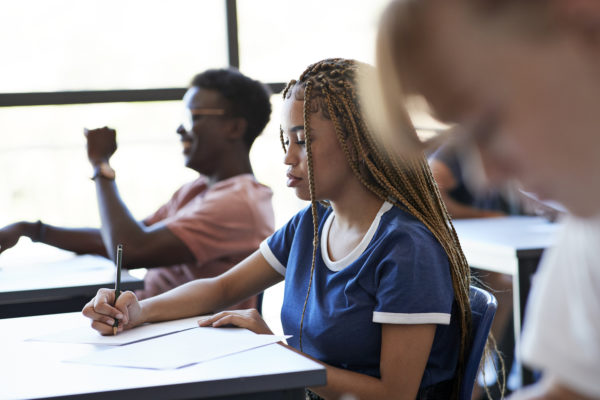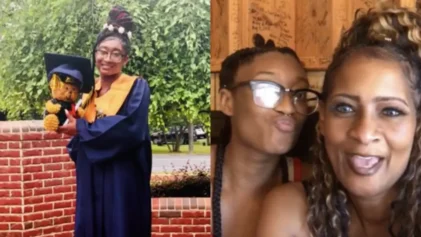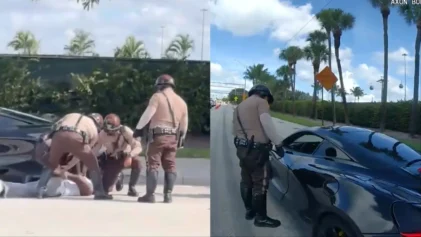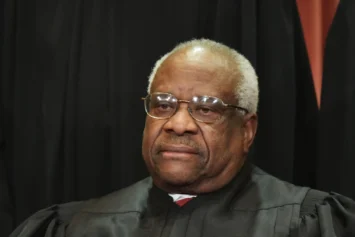The meager number of Black and Latino students admitted into New York City’s most selective, elite public high schools has stayed at the center of a years-long debate among parents, politicians and local education officials baffled by the persistent gap between those students and those of other groups.
And the debate stands to rage on after recent NYC Department of Education data shows the enrollment of Black and Latino students at such top-tier schools has remained largely unchanged, according to an NBC News report.

While Blacks and Latinos account for 7 in 10 of the city’s public high school students, recent admissions statistics show they comprise just 11.1 percent of those accepted into the elite schools for the 2020-21 school year; that’s only a 0.5 percent jump from last year.
“New York City is the most segregated school system in the nation for black students — and the second most for Latinx students,” David Kirkland, the executive director of New York University’s Metropolitan Center for Research on Equity and the Transformation of Schools, told the outlet. “It is unconscionable, those numbers, in a city that expresses a commitment to equity and diversity.”
Admission into NYC’s best public schools is purportedly merit-based. However, the consistently dismal acceptance rates for Black and Brown students has led some education officials to suspect standardized tests, which determine the placement of students at these elite high schools, as a culprit for the lack of diversity.
Richard A. Carranza, chancellor of the city’s education department, admits its reliance on the Specialized High School Admissions Test, or SHSAT, could be biased against certain students and does not serve as the best metric for determining students’ aptitude.
“Diversity in our specialized high schools remains stagnant, because we know a single test does not capture our students’ full potential,” Carranza told NBC News in a statement, adding: “I’m hopeful we’ll move towards a more equitable system next year.”
Of the city’s nine specialized schools in the system of more than 400 public high schools, eight of them admit solely on the SHSA Test.
Education advocates have long criticized standardized tests, highlighting their flaws as they pertain to minority students, especially those from underfunded primary and middle schools. Kirkland pointed to several factors, including a family’s lack of access to affordable test prep or culturally biased language on the exam, as the reasons why Black and brown students are particularly disadvantaged when it comes to these tests.
“What the specialized high schools set up is a vacuum of who gets to have opportunity and who doesn’t,” he added.
Amy Student Wells, a professor of sociology and education at Columbia University, called out similar issues and decried New York City’s one-test admissions policy as a “the new Jim Crow of public education.”
“We know that students’ learning and knowledge is cultural and that too often standardized tests are culturally biased, resulting in racial and ethnic disparities in results,” she said, according to NBC News.
So how do they fix it? Education experts like Kirkland and others have eyed a more qualitative admissions policy used by the University of Texas System which guarantees admissions to a percentage of top-performing students at each high school. The approach is also based on interviews and teacher recommendations, rather than a single standardized test.
New York City Mayor Bill de Blasio has supported calls for a new system and previously advocated for the city to do away with the SHSAT in favor of the Texas approach, according to NBC News. But not everyone has gotten on board with the idea.
In 2018, parents of Asian-Americans students attending the elite public high schools came out in staunch opposition to New York City’s plans to overhaul the system to make room for more Black and Latino students. The decision was aimed at addressing severe racial segregation at the schools, but many Asian parents were concerned over how the move might impact their kids.
Recent statistics show Asian American students hold more than half of the seats at specialized high schools despite accounting for just 16 percent of the city’s public school students.
“I just don’t buy into the narrative that any one ethnic group owns admission to these schools,” Carranza told “Good Day New York” at the time. “We’re systematically excluding students in the most diverse city in the world from opportunities. In this particular case, [it’s] specialized schools.
“I think we have a moral obligation,” he added.
Today, many argue that there needs to be a change, and soon. Kirkland said several alternatives have been posited but no moves to overhaul the policy have been made just yet.
“Nothing has changed in terms of policy, therefore nothing has changed in terms of the outcomes that we get,” he told NBC News. “There are recommendations on the table to do it,” Kirkland said, “and we have to be brave enough, courageous enough, to take a hard look at them.”


